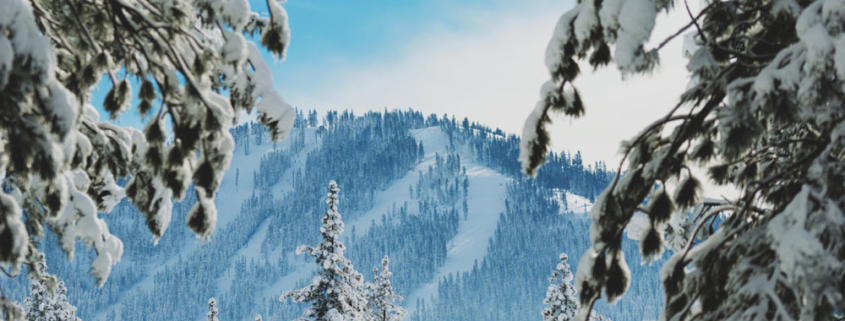Frosty Forests to Frozen Lakes: Winter Adventure Essentials
Winter is a frosty time with snow layered forests and frozen lakes. All beautiful and stunning to behold, but also create a situation where proper winter adventure safety and etiquette is necessary. Lets discuss some of these clothing and gear essentials:
Essential Clothing Layers:
Thermal Base: Start with a moisture-wicking base layer to keep your body dry and regulate temperature. This is usually made out of nylon and polyester materials. Synthetic materials pull sweat and moisture away from the body. Cotton is not an ideal material choice for a base layer as it is more absorbent, no longer providing as an insulator.
Insulating Mid-Layers: Layer up with fleece or down to trap heat and provide additional warmth in freezing
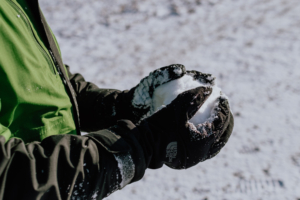
temperatures.
Waterproof Outer Shell/Jacket: Shield against snow and wind with a durable, windproof and waterproof outer layer to stay dry and protected.
Wool Socks and Insulated Gloves: Keep extremities warm with high-quality wool socks and insulated, waterproof gloves.
-
- Wool has natural insulating properties, even when wet. This means that even if your feet sweat or if the socks get damp, they will still retain some of their insulating ability, helping to keep your feet warm in cold temperatures.
- Wool is excellent at wicking moisture away from the skin. This is crucial during winter hikes when your feet may sweat or if you encounter snow. By keeping moisture away from the skin, wool helps prevent discomfort, blisters, and the chilling effect of wet socks.
- Wool is breathable, allowing air circulation around the feet. This helps regulate temperature, preventing overheating during periods of high activity and providing warmth during rest breaks or colder conditions.
- Wool is soft and comfortable against the skin, reducing the likelihood of chafing or irritation during prolonged wear. The natural elasticity of wool fibers also provides a snug fit, preventing the socks from bunching up or sliding down.Toque and Neck Gaiter: Cover your head with a warm hat and protect your neck from the cold with a snug gaiter.
Gear Essentials:
Trekking Poles: Ensure stability and aid balance in challenging winter conditions. Along with some poles, some ice cleats (or crampons, orice grips, or micro-spikes) are wonderful to have along a winter adventure hike.
Backpack with Essentials: Pack a well-organized backpack (ex: spare socks, spare gloves, map, compass, food & snacks, first aid, hydration, emergency blanket, multi-tool, rope, headlamp, cellphone & battery pack)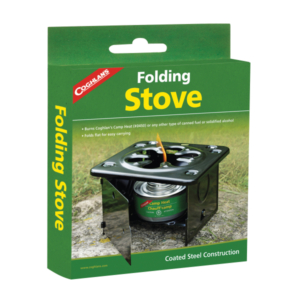
Portable Stove: Enjoy a hot meal midday with a compact foldable stove, a Kelly Kettle, a Jetboil or your favorite stove of choice. Nothing better on a winter day than to be able to have a hot meal.
Navigating Winter Trails:
Check Weather Forecast: Stay informed about changing weather conditions before embarking on your winter adventure. Regardless what the weather report says, be prepared for a storm. The mountains have an ever-changing weather pattern.
Map and Compass Skills: Hone your navigation skills for trailblazing through snowy landscapes, ensuring you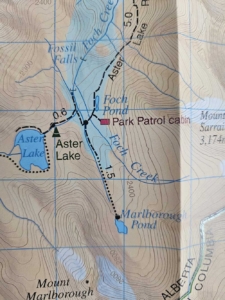 can find your way in challenging conditions.
can find your way in challenging conditions.
-
- Take some time to familiarize yourself with how to read and use these seemingly archaic tools. Orient the map and understand the basics of contour lines. Consider having a route already mapped out, and mark your progress as you go.
Adaptability and Awareness: Embrace the unpredictable by staying alert and adapting to the evolving winter environment.
-
- Be ready to adapt to, and be aware of trail markers, animal tracks & animal signs, time of day/daylight, and the state of those you may be travelling with.
With these winter adventure essentials in your arsenal, you’re ready to traverse from frosty forests to frozen lakes. The beauty of winter awaits—layer up, pack smart, and immerse yourself in the breathtaking landscapes that the season has to offer. But first! Here are some additional essentials to consider.
Additional Winter Adventure Essentials:
Sunglasses and Sunscreen: Shield your eyes from the bright winter sun and protect your skin from its reflective rays on snow.
Portable Shelter: Be prepared for unexpected weather changes with a lightweight shelter or emergency bivy.
Extra Clothing Layers: Pack additional clothing layers to adjust to changing temperatures or in case of
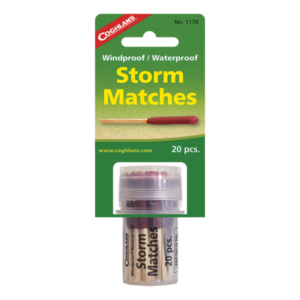 unexpected wet conditions.
unexpected wet conditions.
Fire Starter Kit: Include waterproof matches or a reliable lighter for starting a fire in emergency situations.
High-Energy Snacks: Keep a stash of high-energy snacks like trail mix, energy bars, and dried fruits to stay fueled throughout the day.
Hydration System: Stay hydrated even in cold weather by carrying a hydration bladder or insulated water bottles. In winter, water becomes frozen, and finding water sources can be challenging. However, keeping a water-straw can also be handy to have in your pack.
Emergency Whistle: Ensure you have a loud, easily accessible whistle for signaling in case of an emergency.
Spare Batteries: Pack extra batteries for your headlamp, GPS, or any electronic devices you may be carrying.
Snow Probe and Shovel: If venturing into avalanche-prone areas, carry a snow probe and shovel for safety.
Communication Device: Bring a fully charged cellphone, a satellite communicator, or a two-way radio for communication in remote areas.
Know Your Limits: The most essential of all—know your personal limits and be willing to turn back if conditions become too challenging.
Remember, the key to a successful winter adventure lies not just in the gear you carry but in your ability to adapt, stay informed, and respect the dynamic nature of winter environments. Stay safe, enjoy the winter wonderland, and create lasting memories in the heart of the frosty wilderness!


